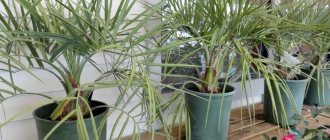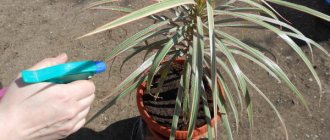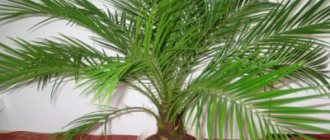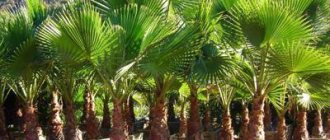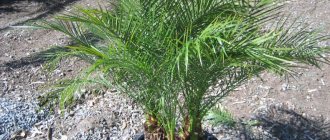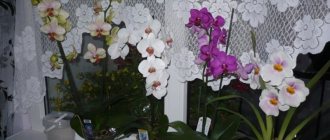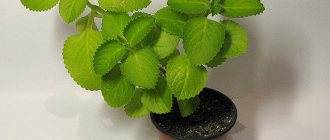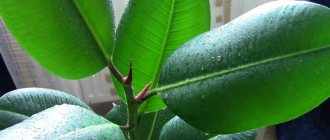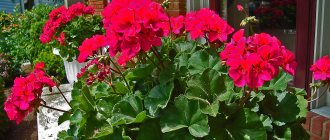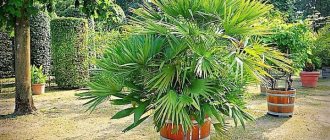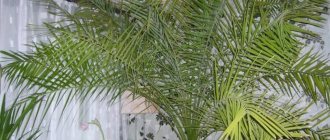Overview of species
Each type of indoor palm tree has its own specifics. Therefore, any consumer will be able to choose the ideal plant according to their needs.
Brachea
In some sources, this plant is also called bragaea, but this spelling is becoming increasingly rare in our country. Although it should be recognized as correct, since the species was named in honor of the famous astronomer Tycho Brahe. The height of trees can reach 12 and even 15 m. The trunk of this variety of ornamental plants is bare from below.
The foliage looks like rounded fans, with deep dissection into segments.
The inflorescences of this culture resemble a complex panicle. Their length reaches 5 m. There are both smooth and spine-covered petioles. Yellow-green flowers are collected in groups of 3 pieces. Brachea fruits are shaped like an egg or a ball.
They always have a fleshy shell. In nature, this plant inhabits Guadeloupe, mountainous dry areas of Mexico and other Central American countries.
Bhutia
This species is also named after one person, but already a Scottish nobleman. Butia capitata is a prominent representative of the palm family; this genus includes approximately 20 biological species. Its natural habitat is various countries of South America.
The leaves always have a pinnate structure, which is how they are distinguished. The height of the palm tree can reach 6 m with a trunk circumference of up to 50 cm.
Kariota
This genus of palms with thin leaves with a ragged edge is very attractive in everyday life. In total, the group includes 12 species. Unlike previous genera, it comes from Southeast Asia and the shores of the Indian Ocean.
Please note: some types of palm trees are traditionally used to produce wine and sugar.
In our country you can expect to grow indoor and soft varieties of caryota. Under natural conditions, they can rise up to 10 m. Growth occurs quite quickly, but if necessary, it can always be easily slowed down by ordinary agronomic manipulations.
There are also shrub varieties of the crop. All its leaves are of the double-pinnate type.
Washingtonia
When describing palm-shaped plants, one cannot ignore the culture that owes its name to the American capital. In nature, this genus grows up to 30 m. But only specimens no larger than 2 m can be grown at home.
Important: this whimsical plant is much more capricious than other indoor palm trees. If handled improperly, it may even die altogether.
Washingtonias grow with wide, fan-like leaves. In a home culture, this crop will not bloom or bear fruit. Since it is brought from warm regions, it will require long, scrupulous acclimatization.
Important: the plant can withstand frosts down to –12 degrees, but only for a short time. Botanists distinguish 2 types of Washingtonia - filamentous or filamentous and strong (robusta).
Giophorba
It also has an alternative name - bottle palm. This name is given for the special geometry of the trunk. The culture is not suitable for apartments and offices. However, experienced plant growers may perceive hyophorba not as an obstacle, but as a challenge.
It is worth considering that such plants are very rare - they may be included in the list of extinct species in the coming years.
Giophorba grows slowly. If 1 leaf appears every year, this is already a good success. It is impossible to grow specimens larger than 2 m in a pot. The plant has a very heat-loving disposition. Already at zero degrees it suffers extremely.
Gouveia
These plants (sometimes also called howea) are in great demand among gardeners. Growing them indoors began in Victorian England. For your information: you can only find gouvea in nature on the Australian Lord Howe Island.
Both species included in this genus grow up to 3-5 m in indoor conditions. In this case, they most often stop at a lower figure.
Important features of culture can be considered:
- a large number of upper stems;
- extremely slow growth (up to 3 leaf blades per year);
- ease of cultivation;
- the ability to achieve a beautiful look only with careful care.
Liviston
Once again, there is a palm tree named after a Scottish nobleman, but without a formal title. It is a tree up to 25 m high. The diameter of the leaves is 0.6-1 m. They are characterized by a dark green, less often gray-green color.
The rest period for Livistona is not very typical; instead of a trunk, it forms a mass of leaf plates.
Rapis
This type of plant is very suitable for small apartments and medium-sized private houses. Moreover, it will look impressive in appearance.
For indoor culture, low rapis is more often used; tall rapis is less suitable for home growing, but it is useful in the office, where you can put a tree 3 m high.
Rapis is extremely light-loving. This plant requires normal room temperature.
Ropalostylis
This palm comes from New Zealand. It is characterized by a slender trunk, on which rings from fallen leaves remain. When flowering ends, small round fruits appear. They are painted red.
Only young ropalostylis are grown in rooms, since the height of adult specimens reaches 10-12 m.
Sabal
The sabal genus includes 16 species. The height of the trunk in nature can be up to 25-30 m. Moreover, its diameter will be up to 60 cm. The evergreen leaves are shaped like a fan.
The rachis rod gives the foliage increased strength.
The plant inhabits:
- Colombia;
- Mexico;
- Venezuela;
- other Central American countries;
- Bermuda;
- southern and southeastern United States.
Trachycarpus
The height of the trunk reaches 12 m. Its diameter ranges from 15 to 20 cm. There are now 9 species in the genus Trachycarpus. The length of the branched inflorescence is up to 1 m.
In home culture, Trachycarpus Fortune predominates, the height of which does not exceed 2.5 m.
Other information:
- optimal growth in partial shade;
- mandatory high air humidity;
- some slowdown in growth in the winter months.
Date
This plant is colloquially called date. The culture was known in the territory of modern Iraq 6 thousand years ago. Date palms can be either trees or tall shrubs.
Varieties with several trunks predominate among them. Dates are often grown at home from seeds.
Hamedorea
The genus Hamedorea includes at least 100 different species. The main range is the south and center of the American continent. All varieties of chamedoreas are low-growing shrubby plants with a rhizomatous structure.
Outside the natural zone of settlement, the “graceful” species and Ernest-August chamedorea are grown. Both varieties tolerate deep shade well.
Hamerops
This genus of indoor palms is represented by only one species. And this is the only plant of this family that can be found in Europe. The trunk reaches 4-6 m in height. Flowering occurs in April, May and June. The plant develops spiny petioles.
The list of possible types of indoor palm trees does not end there.
The betel nut variety is sometimes called the areca palm; the name may be shortened to simply “areca”. But such a reduction is not entirely botanically correct. The height of betel trees can be 30 m. The trunk is always straight, without noticeable branches.
Hawaiian culture, or brigamia, can also be called a volcano palm due to its shape. It is curious that some time ago this species was on the verge of extinction. The situation was saved by the efforts of ecologists and climbers, who had to pollinate the plants by hand. An equally interesting feature for gardeners is that it is a succulent.
Hawaiian palm trees are characterized by a fleshy stem that is brownish-green or silvery-ashy in color.
The genus Pandanus, or screw palm in other words, includes at least 750 plant species. They are most often found in tropical regions of the Eastern Hemisphere. There is pandanus in Madagascar, and at least 90 species grow there. They are able to adapt even to very complex and varied environmental conditions: on river banks, in high mountain forests, on the slopes of volcanoes and in swampy areas.
All year round you will have to maintain the temperature not lower than +19 and not higher than +25°C.
The water palm, or rather the water palm, is a crop with phenomenal resistance to negative conditions. It's more of an aquarium plant that clings to the bottom. It has nothing to do with real representatives of the palm family. But it overwinters excellently even during a very harsh winter.
Purchasing and planting of Aloe vera (this is the botanical name) is possible throughout the warm season.
Description of the palm plant: homeland (where they grow) and to what height they grow
PALMS (Palmae). Palm family. This family includes many species that live mainly in the tropical zones of both hemispheres.
Let's start the description of the palm plant with the fact that these are the most ancient plants, originally reproducing by pollen and seeds, they grow in tropical or subtropical climatic zones. An interesting question is how tall palm trees grow if there is no artificial growth restriction. Under natural conditions they grow up to 9 m; in indoor conditions, the height of the palm tree is much less.
There are 2 known types of palm trees. Fan palms have leaves radiating from the base - a date palm. In pinnate leaves, the leaves spread parallel to the sides from the central vein - areca or bamboo palms. They all love bright lighting, temperatures up to 30C, and plenty of watering. In the interior, palm trees are grown in tubs so that the plant can be conveniently turned evenly towards the sun. Dwarf palms can be placed on the table. These are outdoor plants for spacious and warm rooms.
The homeland of the palm plant is the tropics and subtropics, and the inhabitants of the Black Sea coast of the Caucasus and Crimea were originally brought from North and South America, the Canary Islands, North Africa, Japan, and China. In total, up to 25 species of palm trees are found on the Black Sea coast. And palm trees from the genus Trachycarpus seem to feel like real natives. This fan-leaved Chinese palm is one of the most frost-resistant.
In order to understand where palm trees grow, you need to know that they are common in many regions of the planet. They grow on the shores of tropical seas, in rainforests and in mountains at an altitude of 2000 meters. In their tropical homeland, palm trees grow to enormous sizes; for example, leaves can reach 15–17 m in length and 2 m in width. However, many of the palm trees turned out to be quite unpretentious, and their fairly slow growth allows them to be grown at home.
Palms are perennial trees, rarely shrubs, mostly with a non-branching trunk, at the top of which a crown of huge leaves is formed - up to 14 m in length and up to 2 m in width. There are up to 1,500 species in tropical and subtropical areas. There are valuable and introduced into cultivation: coconut, date, sago, sugar, oilseed, etc.
Excavation data indicate that ancient peoples worshiped the palm tree 10 centuries ago. The ancient Greeks sent messengers with a palm branch to announce a victory. In India, sacred books were written on palm leaves by scratching letters with iron needles. The date palm was especially respected. She was the emblem of ancient India, her image was minted on medals and coins, cities were named after her: Jericho, or the city of palm trees; Tamar, or date palm (Palmyra among the Greeks). Even the name of the date palm itself in Latin is a legend: Phoenix dactylifera.
The coconut palm is of particular value. Its nuts are filled with nutritious oil and vegetable milk, which are used in food. The leaves and shell of the fruit are also used.
The sago palm grows in the swamps of India and on the islands of the Malay Archipelago. Starchy flour is obtained from its core, and cereals - sago - are made from the flour.
In Sumatra, swing bridges and stairs are made from the trunks of the creeping rattan palm tree.
In China, patched leaves, dried and bleached with sulfuric acid vapor, are used to make fans.
In Algeria, flour is obtained from the heartwood of the Hamerops palm tree. Fruits and young shoots are also eaten. Mats are woven from leaves, and summer hats are made from leaf veins.
What are the benefits of domestic palm trees?
Once in an apartment, a home palm tree can become the main decoration. What made this houseplant so popular?
The palm is an elegant solitary plant. To decorate your interior with it, you don’t need to start a whole nursery. One such tree will fill the void in the corner and become a complete decoration in any room, on the balcony, in the corridor.
- The plant is not demanding on growing conditions. You don't need to understand the intricacies of botany to grow a beautiful indoor palm tree.
- A big plant means more oxygen.
There are many varieties of this plant, from which you can choose the one that best suits your specific growing conditions. These are palms for warm rooms, moderately warm and cool.
If the area allows, you can choose a larger and taller plant. If not, there are types that are smaller in size.
The domestic palm tree is suitable for growing and propagation in any climate zone. Even in winter, it does not need to create special conditions, just protect it from dry air.
It is shade-tolerant, so it is not necessary to place the flower pot only near the window.
Detailed drawing with colored pencils
In this example, the palm tree is depicted in more detail, which makes the image more realistic and convincing. The illustration technique is not very complicated, and all you need is colored pencils and a sheet of paper.
Step by step drawing process:
- Approximately in the center of the sheet, draw two arcs with a brown pencil, depicting a tree trunk.
- On the left side of the trunk, draw “rings” in the form of stripes.
- Paint over the left side of the trunk and leave the right side white; the light in the drawing will fall from this side.
- Paint over this area on the trunk with a light yellow pencil.
- Use a dark brown pencil to more clearly draw the outline of the trunk on the left.
- Using a green pencil, draw oval-shaped coconuts at the top of the trunk. Coconuts can reach 40 cm in length, but since the tree itself is very tall, they are depicted as small. The outer layer of coconut can be not only brown, but also green and yellow.
- Draw several branches at the base of the fruits, on which new coconuts are tied.
- Make long arcs - palm branches radiating down from the trunk. The branches of the palm reach a length of 6 m, they are quite heavy and therefore hang down.
- Using a dark green pencil, draw leaves from each branch, of which there are up to 200-400 on one branch of a real tree.
- Draw such leaves on all branches. They need to be done as a hatch, in the direction from the center of the branch, with a downward slope.
- Color the palm fruits with a light green pencil.
- Use the same pencil to make strokes on the leaves, duplicating the dark green pencil.
- Along the edges of the leaves, make longer strokes of light green, which will show their translucency in the sun.
- From below, at the base of the trunk, draw clear diverging strokes with a brown pencil. In nature, the main root of the plant quickly dies off, and in its place a large number of adventitious roots appear, growing from the base of the trunk. Most of them grow superficially.
- Show the ground level by shading with a light green pencil.
Growing and caring for domestic palm trees
Tropical beauties are unpretentious to keep, but there are some nuances that should be remembered and taken into account when growing them. First of all, the time of their acquisition, which should be in the spring or summer, when it is easier for them to get used to the conditions of their new home.
One of the problems of flower growers is transplantation.
A certain difficulty is that for large specimens it is more difficult to buy components for the substrate. The soil mixture that is sold in most flower shops is designed for young plants no more than 2 years old or only grown from seedlings.
For mature palm trees, the soil needs to be made heavier by adding turf soil and humus from leaves, which are not available for sale.
For young palm trees, a substrate is made up of the following components, taken in equal volumes:
- high peat;
- turf land;
- leaf humus;
- sand.
For large-scale soils, the basis is 3 volumes of soddy-clay soil mixed in equal parts with leaf humus, and 1 volume each of coarse river sand and high-moor peat.
The optimal period for transplanting domestic palm trees is from the second ten days of April until mid-summer.
Plants transplanted according to the basic rules are not fed at all in the first year, but this does not apply to those palm trees that are transferred to a new flower vessel by transfer. They, like other indoor palm plants, are fertilized with a special mineral complex during active development.
Water your palm tree sparingly throughout the year. She doesn’t like the substrate to dry out or overwater, and she responds very gratefully to spraying.
Attention! The drain hole should be inspected regularly. Very often, overgrown roots clog it, and water stagnates in the pot, which can lead to deterioration of the plant’s condition and the appearance of diseases.
Growing from seed
A homemade date palm grown from a seed will turn out no worse than a ready-made sprout bought in a store. The main thing is to properly prepare the seed for planting and plant it in suitable soil. The most favorable time for planting is the end of winter.
Selecting a seed to plant
Regular unprocessed dates bought at the market are suitable for planting. Choose ripe, unspoiled fruits. Eat the fruit and take a good look at the pit. If it is uniformly colored and does not have foulbrood, plaque, stains, or unevenness, set it aside for planting.
Prepare a few seeds for planting, because not all of them can germinate.
Seed preparation
- Rinse the selected seeds under running water.
- Pour warm water into a bowl.
- Place the date pits in a bowl to cover with water.
- Change the water every day, pour clean, warm water.
- After 3-4 days, remove the seeds and lightly file away the hard skin.
- Place them in warm water again for 3-4 days.
- Change the water 1-2 times a day until the sprouts of the future palm tree appear.
Soil selection
Suitable soil can be easily purchased at any flower shop. You can also cook it yourself. To plant a date seed, prepare a mixture of sawdust, turf and sand in equal proportions. To transplant a grown plant you will need: turf, leaf soil, humus, sand. Take all components in proportions accordingly - 1:1:1:5. To ensure that the soil for the date palm is initially fertilized, you can supplement the prepared soil with peat, coal, and rotted manure.
Landing rules
- Take a small pot 12-15 cm in diameter for planting. It’s not worth taking a large one right away; it’s better to replant it later.
- The prepared soil is placed on the drainage. For drainage under the date palm, pour 3 layers: pebbles, expanded clay, coarse sand.
- Make a 2-3 cm depression in the soil and place the sprouted seed there vertically, with the sprout facing upward.
- Sprinkle with soil and water generously.
- Cover the hole with a jar or place the pot on the radiator.
Palm-like plants
The group of palm-like plants includes species that only vaguely resemble in appearance representatives of the Arecaceae family. Often these are herbaceous plants or succulents; there is a shrub with fruits that taste identical to dates, but they are classified as palm trees only by popular imagination.
Brighamy
Hawaiian palm Brighamia is a perennial succulent from the Campanaceae family, endemic to the Hawaiian archipelago. A short-lived plant that is on the verge of extinction - only a few specimens remain in nature under protection in Na Pali Coast National Park, located on the island of Kauai.
The plant has a thick, unbranched stem, reaching a height of 1–2 m, less often 5 m. At its crown there is a rosette of fleshy, spoon-shaped leaves. It blooms in autumn with fragrant funnel-shaped flowers of lemon or cream color, forming an inflorescence of 3-8 pieces.
Karlyudovik
Panama palm Carludovica (Carludovica) is a low palm-shaped plant from the Cyclantaceae family - only 4 species in the genus, common in the tropical latitudes of America. Named after the Spanish monarch Charles IV. Leaves on long petioles are beautifully fan-shaped, three or five dissected. The flowers resemble balls on a cylindrical cob, the fruits are tetrahedral berries.
Banana Palm Banana
Banana palm Banana (Musa) is a herbaceous plant of the Banana family, in nature it grows up to 7 m. It is widespread in Southeast Asia, but mostly on the islands of the Malay Archipelago. The genus includes up to 70 species of large herbs, which are often mistaken for trees, with a powerful root system and a very short trunk that practically does not protrude above the soil surface.
What many people mistake for a trunk are actually tightly fitting leaf sheaths - large, oval, soft.
When the plant is about to bloom, a long peduncle is formed inside this false stem, raising upward a brush with male and female flowers of purple or greenish color.
Castor palm
The castor palm (Ricinus) is the only herbaceous plant in the genus, the castor plant, which belongs to the Euphorbiaceae family. In temperate latitudes it is considered a medicinal, oilseed and gardening annual crop; in tropical regions it grows as an evergreen shrub. Supposedly originates from Ethiopia, but has spread throughout the world.
In some countries it has been grown for more than 4 thousand years.
The stems are hollow, growing vertically, and have different shades - purple, reddish-burgundy, pink or almost black. The leaves are huge, sometimes reaching 80 cm in diameter, with a beautiful maple-like shape on long petioles. The flowers in the axillary inflorescences are small and inconspicuous, but the spiny fruit capsules with oval seeds inside look quite exotic.
Snake Palm Amorphophallus
Snake palm Amorphophallus is a tuberous plant from the Araceae family. The genus consists of 170 species found in West Africa and the Pacific Islands. One of the species has the largest inflorescence in the plant world, 2.5 m high, with the most unpleasant smell of rotten fish and spoiled eggs.
It grows from an underground turnip-shaped tuber, throwing out only one tripartite leaf, very rarely - 2-3.
The inflorescence is an elongated spadix, wrapped in a blanket, white-green on the outside, crimson or purple on the inside.
Real jujube
Unabi Chinese date, or real jujube (Ziziphus jujuba) - the species belongs to the genus Jujube of the Buckthorn family. A small tree or shrub with thick bark and simple oval leaves. It blooms with inconspicuous miniature light green-white flowers.
The fruits are very tasty and juicy drupes with sweet reddish-brown pulp, reminiscent of dates in taste.
Sago Palm Cycas
Cycas sago palm (Cycas) is a cycad from the genus of the same name, which is the only one in the Cycas family, consisting of 90 species. It lives in Asia, Indonesia, the Pacific Islands, as well as Australia and Madagascar. It is very similar to a palm tree, grows up to 15 m in height, the trunk is thick in circumference even with a relatively short stature.
The feathery leaves are concentrated at the crown of the trunk in the form of a tuft.
Beaucarney
Bottle palm Nolina, or Beacarnea, is a tropical plant from the Asparagus family, native to southern Mexico. The barrel of the nolina is shaped like a bottle. The thickening in its lower part serves to accumulate moisture and nutrients. At the top a tuft of narrow linear leaves is formed.
Due to its exotic appearance, it is popular in decorative floriculture and is popularly called “horse tail” or “elephant foot”.
Madagascar palm
Madagascar palm Pachypodium lamerei is a species from the Pachypodium genus of the Kutrovaceae family. The plant has a tall, thick silver-gray trunk with characteristic thorns, which occasionally branches. The leaves are narrow, with a distinct central vein, forming a rosette at the top.
In the natural environment it grows up to 6 m, but in indoor conditions it grows slowly and does not reach more than 1.8 m.
It blooms reluctantly indoors, but in the garden it produces spectacular large snow-white flowers with a pleasant aroma.
Euphorbia white-veined
Euphorbia palm, or White-veined Euphorbia (Euphorbia leuconeura) is a plant with a thickened 4- or 5-rib trunk and a beautiful rosette of elongated oval leaves from 10 to 20 cm long with light veins. The flowers are small, thread-like and very rich in nectar.
The three-nest fruit capsule has the unpleasant property of shooting seeds all over the room. Once in neighboring pots, they germinate beautifully.
Cat palm Cyperus
Cat palm Cyperus is a swamp tropical representative of the sedge family with straight herbaceous stems topped with an umbrella-tuft of hard linear leaves.
There are about 700 species in the genus Syt, but several are popular indoors, especially loved by domestic cats, which is why they received such a popular name.
Distinctive features of palm trees
There are about 2,800 species of palm trees around the globe. They differ from most plants in that the leaves grow at the top. However, there are palm trees whose leaves come from the root bud.
Let's take a closer look at all the types with names and photos.
There is the following division of indoor palm trees, based on the characteristics of the leaves and trunk:
Reed . Some Hamedoreas, Rapuses. Their stems are thin, tall, and reed-like.
Cirrus . Hamedorea eleganta, Howea Forster and Belmora, date - Roblen and Canary date, Raffia, Gomuti. These palms have narrow, arched leaves that can be straight and grow upward. The crowns of this group are both soft and hard.
Fans . Chamerops squat and tall, Washingtonia, Rapis tall, Livistonia chinensis. The crowns of such palm trees are split into many segments extending from the center and look like a round fan; they grow very large, their petioles have thorns.
Sagoceae . False, but have the appearance of real palms, only one species is grown for decorative purposes - Cycad avertus, a low plant that has a cone-shaped small trunk from which long feathery leaves radiate.
"Fish tail" . Kariota belongs to this species. The leaves look like a fish's tail - a diamond- or triangular-shaped fin, hence the name, these are one of the fastest growing palms.
Plants that resemble them in appearance are often mistaken for palm trees. For example, dracaenas and yuccas.
False palms
False palms include a form of plant that is characterized by a bare vertical stem and a rosette of narrow strap-shaped or narrow-linear leaves at the crown. Outwardly, there is a great similarity with a palm tree, but these plants do not belong to the Arecaceae or Palmaceae family, but are representatives of other families - Pandanaceae, Agaveaceae, Asparagus.
Yucca
Yucca is a garden or indoor plant from the Agave family. The flower, grown in open ground, has a rosette of hard, belt-shaped leaves, from the center of which, in early summer, a tall peduncle with many drooping bell-shaped flowers of white or pink color is formed. Indoor yuccas for the most part have a woody trunk, occasionally branched, on the top of which narrow linear-lanceolate leaves are collected.
The flowers are large, bell-shaped, snow-white, forming a numerous panicle. There are 20 species in the genus, distributed in the southern United States and Central American countries.
Dracaena
Dracaena is a genus of woody or shrubby succulents from the Asparagus family, which according to various sources includes from 40 to 150 species, living mainly in Africa. Only a few species grow in the southern regions of Asia and only one in the tropical zone of Central America.
Like palm trees, dracaena has a single or branched trunk, to which narrow leaves with longitudinal veins are attached evenly along the entire length, converging to a pointed apex.
At home it blooms extremely rarely. The small whitish-light green flowers of all species, with the exception of one, have an unpleasant smell.
Screw Palm Pandanus
Screw palm Pandanus (Pandanus) - almost 750 species of tree-like plants of the Pandanaceae family, living mainly in the tropical latitudes of the Eastern Hemisphere, are considered to be pandans. In Madagascar alone there are approximately 90 species.
Their trunks are branched and long, sometimes growing more than 10-15 m, reaching a maximum of 25 m.
Adventitious roots are formed along the woody pagons, which save the plant during a strong hurricane wind. The leaf blades can grow to a length of 4 m with a width of only 11–15 cm, and are arranged spirally on the trunk in 2–4 tiers. Inflorescences - cobs or panicles.
Cordilina
Cordyline is a small genus of 26 species in the Asparagus family. Its representatives live in the subtropics and tropics of the American, Asian and Australian continents. Among them there are trees and shrubs with fleshy tuberous roots. The foliage is colorful, with cream or soft pink stripes.
The leaf blades are elongated-lanceolate, belt-shaped. Small flowers of scarlet, snow-white, lilac colors are collected in a panicle.
Adult specimens resemble dracaena, the differences being that the root section of the latter is orange-coral, while the cordyline is ordinary white. They are also distinguished by leaf veins - parallel in dracaenas, in cordyline they clearly branch from one central one in the middle of the leaf.
How to grow your own
You can also propagate palm trees at home. Ornamental palms need to be grown by sowing fresh seeds, and in some cases, by cuttings. Germination requires a temperature of +25…+35 °C. They are sown in pots with sawdust, moss and sand. A drainage layer with charcoal particles is placed at the bottom. Seeds germinate within a week or several months (depending on the species). It is necessary to replant before the start of active growth, in the spring. Young palm trees need to be transhipped every year, old ones - once every few years. During these manipulations, you should be careful with the roots. The pot should be selected based on the size and shape of the rhizome. If the roots rise from the ground, then you should choose a high pot. For accelerated development in spring and summer, it is recommended to use fertilizing in the form of organic fertilizers.
Most palm trees do not tolerate the replanting process well, so it needs to be done quickly and as rarely as possible.
Types of indoor palm trees with photos
Planting a palm tree in the garden:
A palm tree for planting in the garden must be at least 50 cm in height and at least 4 years old. The best planting season is from May to June.
In areas where severe frosts are possible, special protection must be provided for the root zone. > Planting cold-sensitive palms
Having chosen a suitable location, dig a planting hole. It should be about 20 cm wider and deeper than the root ball. Pour about 15 cm of palm soil into the hole.
Now remove the plant from the pot. Do this carefully so that the earthen ball remains as intact as possible and does not fall apart. The palm's root tap should point vertically downward. If the root has already curled up at the bottom of the pot due to lack of space, trim it back so it can grow vertically down into the soil.
Place the prepared palm tree in the planting hole. Fill the space on the sides with suitable soil and compact it, then water generously.
If you did everything correctly, the ground level around the trunk should be 3–5 cm lower than the surrounding one. This will make watering more convenient.
It is better not to add organic substances, such as compost and pine bark, to the ground, but rather scatter them in the form of mulch, updating them every year. Heavy clay soil is made looser with sand and a large amount of perlite. Very sandy conditions can be improved by adding clay. A soil pH of 5.5 to 7.5 is recommended.
Fertilizer/nutrient consumption by palm tree
Palm trees are not as fond of fertilizing as citrus trees - they get by with about half of the citrus fertilizers. However, they are also demanding on the quality of fertilizers, so they need to be provided with basic nutrients and microelements. Lack of nitrogen and/or iron in plants causes yellowing of the tips or entire leaves.
Palm trees are fed with palm fertilizer every 14 days during the growth phase - from March to September. Do not fertilize during the cool winter months. They continue to lightly fertilize the palm trees that winter in the house.
Pruning Brachea palma palma
Remove dying leaves only after the petioles have completely dried: to do this, cut the branch with sharp scissors a few centimeters from the trunk.
Since the top of the Brachea is the only growing point, it cannot be trimmed.
